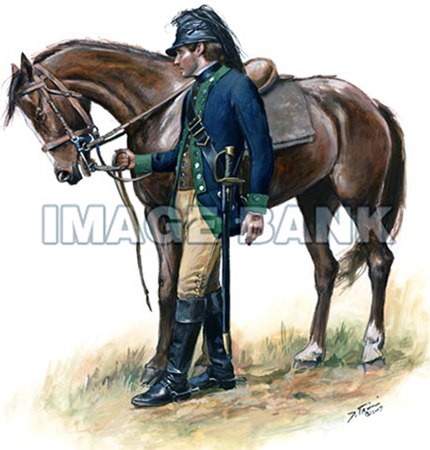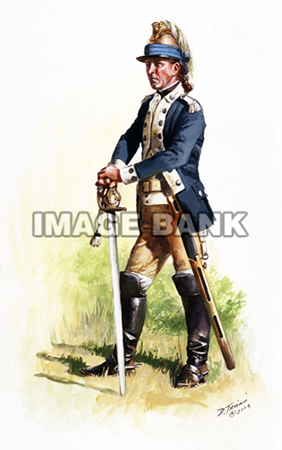- •
The primary recruiting and “building block” unit was the regiment or battalion, the terms being very close to interchangeable in use. In general, the term “battalion” was more commonly used during the first years of the war, “regiment” becoming dominant by the mid-war period. The typical regiment consisted of between eight and ten companies, the official structure for a significant portion of the war calling for nine companies per regiment.
- •
A brigade, the next progressive unit of organization, was generally composed of between three and five regiments. The brigade was the primary operational or “functioning block” of the army, the regimental composition of many brigades frequently remaining constant for up to three or more years. The brigade became the primary operational unit particularly due to its typical level of manpower. While the theoretic “on paper” strength of a Continental regiment called for approximately 750 officers and men, such numbers were essentially never met and the typical regiment was more commonly capable of fielding only one-half or less of that designated quota. The typical brigade, numbering between approximately 1,200 and 1,750 effectives, therefore, presented a combat unit of particularly flexible tactical size. As a further demonstration of the high priority of state orientation and allegiance, virtually all Continental brigades were composed of regiments of the same state.
- •
The next level of organization “up the ladder” was the division, typically composed of between two and four brigades. Due to varying geographic troop requirements, the capacity for interstate support, and the dependence on a quite limited number of qualified candidates for becoming effective major generals, divisions tended to be less stable in composition than were brigades, and also became of much greater functional significance during periods of major campaign activity.
- •
During certain periods of active campaigning, divisions were at times aggregated into larger units termed wings. Unlike the corps level of the Civil War during the following century, the wing was very much an ad hoc unit, primarily employed during major campaigns and/or in circumstances of extended lines of occupation. Clearly, both these examples illustrate situations in which Washington chose to delegate partial strategic as well as tactical management, and desired effective coordination at an operational tier above the divisional level.
- •
For primarily administrative rather than operational purposes, the Congress established seven departments, extending from Canada to the southern border of Georgia. These, unsurprisingly, varied greatly in size, one department covering all of eastern Canada, while the critically strategic Highlands Department contained only a few counties of northern New Jersey and southern New York. While a department was not truly an operational army “level”, orderly books were kept at and orders, of course, were issued from departmental headquarters. The former books, when containing no “lower” level orders, are provided a specific section of this Index. Likewise, several major forts’ garrisons maintained books applying specifically to those fortifications. Orderly books relating to such garrisons are likewise provided specific Index cataloging.
|




